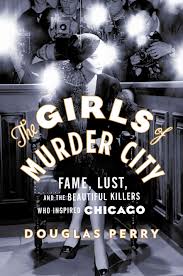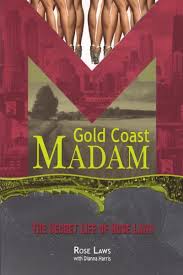Chicago Pulp – Look But Not Too Closely
Stories of true crime have lurid appeal. We stop, we gawk, rubberneck, and then move on, usually feeling a little cheaper for doing it. It’s a guilty pleasure best enjoyed quickly. We can laugh about New York Post headlines without ever reading the articles.
Occasionally a crime story – like the play/musical/movie Chicago – resonates. A perverse curiosity pulls us in and something special in the telling and tone and the telling keeps us engaged and coming back. Exploring that tension is the critical thread that makes Douglas Perry’s The Girls of Murder City an interesting read. Subtitled “Fame, Lust, and the Beautiful Killers who Inspired Chicago,” it recounts the real-life murders and trials of the women in the play Chicago. Perry gives the histories of Belva Gaertner and Beulah Annan, who murdered and walked away free thanks to their beauty and all male juries. We learn of Kitty Malm and Sabella Nitti, who were less attractive and less fortunate. The distinction continues to this day. The prettier women rate a Wikipedia page while their less attractive Cook County jail fellows do not.
Perry takes a clever approach to his real-life history of 1920s alcohol, guns, and violence, by focusing on focuses on Maurine Watkins, a young female reporter for the Chicago Tribune. Watkins was a budding actress and playwright who took the newspaper job to learn more about life. Her articles on the crimes were well-written and well-received. Her sojourn in Chicago was short, however, ending as the Leopold and Loeb trial dominated the headlines. This cold-blooded kidnapping and murder of a teenager marked a different kind of crime and a different kind of zeitgeist. Watkins returned to the east coast, contacted her old Harvard theater professor, and began crafting a play about the women murderers. The Brave Little Woman in early versions, the play became Chicago. Watkins’ satirical take on violence and celebrity was an instant hit. Realizing that the underlying story of the women was depressing, Watkins found the right tone to give an audience sufficient distance to enjoy themselves. Satire is an effective tool to deal with the dreadful. Done well, we can even laugh at horror. Later reworked into a musical and more recently a film, Chicago is a mainstream cultural artifact.
Alike but different in important ways, Rose Laws’ Gold Coast Madam is a first-person account of a life of Chicago crime. Born to poverty in rural Tennessee, Laws recounts her rise to becoming a very profitable agent for prostitutes in Chicago (she does not consider herself a madam – even with the book title). Laws is unapologetic about her choices. She tells her tale in a straightforward manner, from early childhood abuse to a young marriage marked by violence and cruelty. Laws lost custody of her five children to an orphanage for several years and struggled to earn enough money to keep her family together. She eventually found her niche selling sex. Laws accepts the world as it is. Her candor is appealing. Her autobiography is absent moral or critical reflection, save for a deep wish that she had continued her education and had insisted on more education for her children. Without narrative distance or a different perspective, Laws’s history is sad.
How a story is framed and told can matter more than the story itself – and it is particularly true when it comes to stories of violence and crime.
David Potash

